ATC code: A16AX08
Wikipedia: Teduglutide
On December 27, FDA approved Teduglutide (Tradename: Gattex®, Tradename: Revestive, Research Code: ALX-600, CAS# 197922-42-2), an analog of Glucagon-like peptide 2 (GLP2) expressed in Escherichia coli by recombinant DNA (rDNA) technology indicated for the treatment of adult patients with Short Bowel Syndrome (SBS).
Short Bowel Syndrome (MeSH: D012778) is a condition in which nutrients are not properly absorbed (malabsorption disorder) caused by surgical removal of small intestine, or rarely due to the complete dysfunction of large segment of bowel. More information about SBS can be found in Medscape.
Teduglutide is an analog of naturally occurring Glucagon-like peptide 2 (GLP2), which is 33 amino acid peptide created by specific post-translational proteolytic cleavage of proglucagon in endocrine L cells of the distal intestine. GLP2 is known to increase intestinal and portal blood flow, and inhibit gastric acid secretion.
Teduglutide binds to Glucagon-like peptide-2 receptors (GLP-2R) located in subpopulations of enteroendocrine cells of intestine, sub-epithelial myofibroblasts and enteric neurons of the submucosal and myenteric plexus. Activation of these receptors results in local release of multiple mediators including Insulin-like growth factor (IGF-1), nitric oxide (NO) and Keratinocyte growth factor (KGF).
Glucagon-like peptide-2 receptors (GLP-2R, CHEMBL5844, O95838), 553 amino acid long, is a receptor for glucagon-like peptide-2. The activity of this receptor is mediated by G proteins which activate adenylyl cyclase. The amino acid sequence of GLP-2R (human) is :
>GLP2R
MKLGSSRAGPGRGSAGLLPGVHELPMGIPAPWGTSPLSFHRKCSLWAPGRPFLTLVLLVS
IKQVTGSLLEETTRKWAQYKQACLRDLLKEPSGIFCNGTFDQYVCWPHSSPGNVSVPCPS
YLPWWSEESSGRAYRHCLAQGTWQTIENATDIWQDDSECSENHSFKQNVDRYALLSTLQL
MYTVGYSFSLISLFLALTLLLFLRKLHCTRNYIHMNLFASFILRTLAVLVKDVVFYNSYS
KRPDNENGWMSYLSEMSTSCRSVQVLLHYFVGANYLWLLVEGLYLHTLLEPTVLPERRLW
PRYLLLGWAFPVLFVVPWGFARAHLENTGCWTTNGNKKIWWIIRGPMMLCVTVNFFIFLK
ILKLLISKLKAHQMCFRDYKYRLAKSTLVLIPLLGVHEILFSFITDDQVEGFAKLIRLFI
QLTLSSFHGFLVALQYGFANGEVKAELRKYWVRFLLARHSGCRACVLGKDFRFLGKCPKK
LSEGDGAEKLRKLQPSLNSGRLLHLAMRGLGELGAQPQQDHARWPRGSSLSECSEGDVTM
ANTMEEILEESEI
Teduglutide, just like GLP2 and is 33 amino acids long, with a molecular weight of 3752.13 daltons. The recommended daily dose is 0.05 mg/kg body weight administered by subcutaneous injection once daily. The chemical structure was obtained from Chemblink.
Amino acid sequence of Teduglutide is : His-Gly-Asp-Gly-Ser-Phe-Ser-Asp-Glu-Met-Asn-Thr-Ile-Leu-Asp-Asn-Leu-Ala-Ala-Arg-Asp-Phe-Ile-Asn-Trp-Leu-Ile-Gln-Thr-Lys-Ile-Thr-Asp
Amino acid sequence of Teduglutide is : His-Gly-Asp-Gly-Ser-Phe-Ser-Asp-Glu-Met-Asn-Thr-Ile-Leu-Asp-Asn-Leu-Ala-Ala-Arg-Asp-Phe-Ile-Asn-Trp-Leu-Ile-Gln-Thr-Lys-Ile-Thr-Asp

After subcutaneous administration of Teduglutide in healthy individuals, the absolute bioavailability was 88% and maximum plasma concentrations was achieved in 3 to 5 hours, volume of distribution was 103 mL/kg and plasma clearance was approximately 123 mL/hr/kg with mean terminal half_life of approximately 2 hrs. Metabolic pathway of Teduglutide was not investigated in humans, however it is expected to be degraded into small peptides and amino acids via catabolic pathways similar to endogenous GLP-2.
The license holder is NPS Pharmaceuticals, and the product website is www.gattex.com.
Full prescribing information can be found here.
Ramesh


Comments